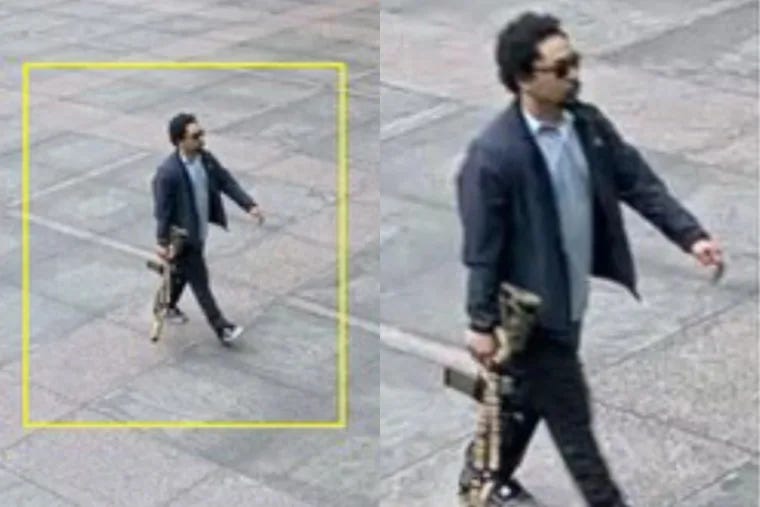When the Brain Fails Us: Understanding the Tamura Case
True root cause solutions to all brain related issues can't come quickly enough
On July 28, 2025, 27‑year‑old Shane Tamura carried out a deadly shooting inside the NFL’s headquarters in Midtown Manhattan, killing four people—including an off-duty NYPD officer—and then himself. His three‑page suicide note claimed he suffered from chronic traumatic encephalopathy (CTE), requested his brain be studied after death, and blamed the NFL for his condition.
Although Tamura played football only at the high‑school level, he linked his mental health struggles to brain injury sustained in youth sports and alleged a causal role for CTE—even citing another affected player, Terry Long.
What Is CTE—and Why It Matters
CTE is a progressive neurodegenerative tauopathy tied to repetitive head trauma, seen mostly in contact-sport athletes and military personnel. Four of the five most pressing issues for the military are brain function related and in the UK news cycle, rugby has also been under the microscope following early diagnoses of brain related illness in ex-professional players, coming 30 years after the game went professional in the mid 1990s.
Symptoms typically appear years or decades later and include:
Mood instability, impulsivity, aggression
Cognitive decline, memory loss, impaired judgment
Depression, suicidality, sometimes homicidal behavior
A landmark autopsy study found nearly all NFL players’ brains tested had some CTE; rates among high school players reached 21 %
Because CTE can only be conclusively diagnosed post-mortem, individuals suffer without guidance while alive.
A number of functional medicine clinics have helped NFL players improved brain health. Seth Conger, previous COO of Carolina Healthspan shared “once we started to get consistent, proven outcomes with NFL players using a combination of multimodal brain support alongside neurofeedback and other innovative therapies, word quickly spread. We ended treating more than a dozen players. It was shocking to see the damage on the Neuroquants but also empowering to see the changes in six or nine months of active brain restoration.”
Why the Brain—and Its Healing—Deserves More Attention
1. Missed Warnings, Missed Hope
Many with early-stage brain dysfunction show behavioral changes long before catastrophe. Too often, mental health systems respond only after crises occur. With new blood based biomarkers as well as imagining and innovative diagnostic tools we can get ahead of the issues before they become tragic.
2. Blurred Lines Between Brain and Behavior
Behavioral disturbances rooted in neurobiology—such as impulsivity and aggression—are often dismissed as moral failings instead of warning signs of brain injury. Even in children, there is growing research of issues like PANS / PANDAS where infection drives mental health symptoms, but without a full work up how would you know?
3. Prevention at the Roots
Contact sports, military exposure, domestic violence—all risk factors for traumatic brain injury. Yet awareness and preventive measures remain fragmented and inconsistent. Active prevention from nutrition, sleep, smart supplementation and psychosocial support can make a big impact on increasing brain function.
4. Treatment and Support Gaps
Currently, there is no cure for CTE. Management is supportive—treating symptoms like memory loss or depression—but the underlying degeneration continues unchecked without active brain restoration.
A Call to Action: Healing Brains, Not Stigmas
Here are a few ways we can make an impact.
Early Detection and Monitoring
Expand routine brain health screenings, especially for those with head injury history, and integrate cognitive/mood tracking into primary care and mental health settings. TruNeura is supporting the next generation of clinics to deliver brain protection programs.
Prevention and Safe Practices
Enforce stricter concussion protocols across youth sports, military training, and contact activities. Invest in education on helmet safety, rule changes, and safer coaching practices.
Crisis Intervention Reform
Mental health systems must see chronic brain dysfunction as a biological driver—not only a psychiatric category. Ensure that intervention includes neurological evaluation, not just medication or talk therapy.
Research into Biomarkers and Treatment
Support development of live diagnostic tools: imaging, blood-based biomarkers, and therapies that can slow tau accumulation or support neural repair. By using software like TruNeura we can continue to build the evidence base that brian health can be restored through active engagement.
Public Awareness
Share stories—like Tamura’s note—to humanize the consequences of brain injury and counter misinformation. Stigma must give way to understanding that brain disruption is neurological, not moral.
Although TruNeura was created to scale the outcomes in reversing cognitive decline, those same concepts, strategies and therapies are being used by innovative clinics to support all manner of brain issues. This case brings into sharp focus the importance of this trend accelerating.
Brain dysfunction shapes behavior—and we can intervene meaningfully. Shane Tamura’s tragedy underscores exactly why the brain is not optional in our thinking about mental health, brain care and public safety. His plea—“study my brain”—should not go unanswered.



An important consideration for young football players is whether they carry the APOE4 gene, found in about 25% of the population. When combined with head trauma from the sport, this genetic risk can significantly increase the likelihood of developing Alzheimer’s disease by the mid-60s. Parents with a family history of Alzheimer’s should be aware of this risk before allowing their son to join a high school football team.
All very true. How sad that Mr Tamura knew his brain was damaged but could not get help. Also sadly, he must have felt that others had to die to get our attention.